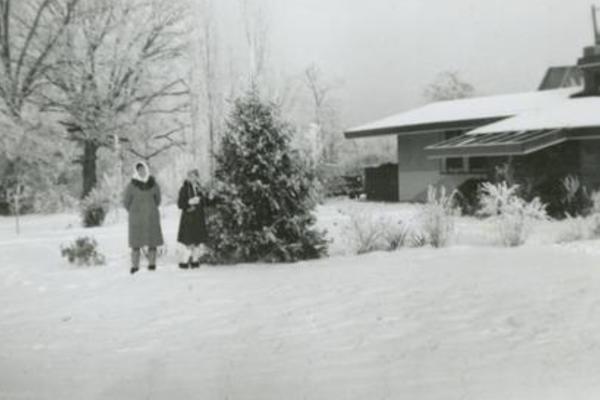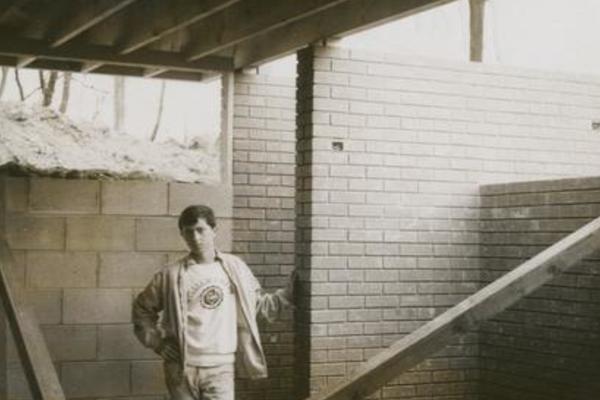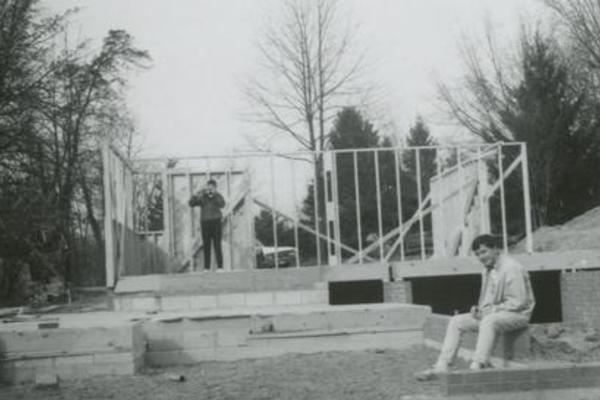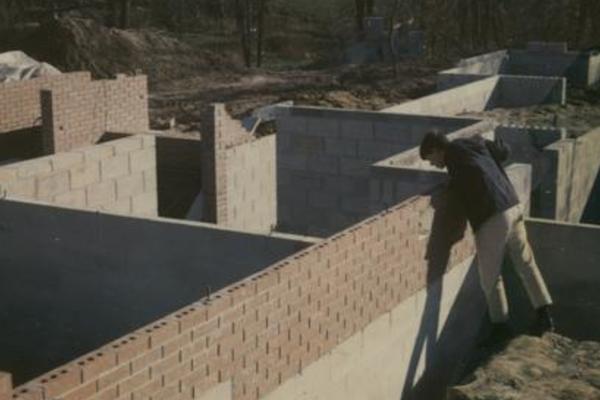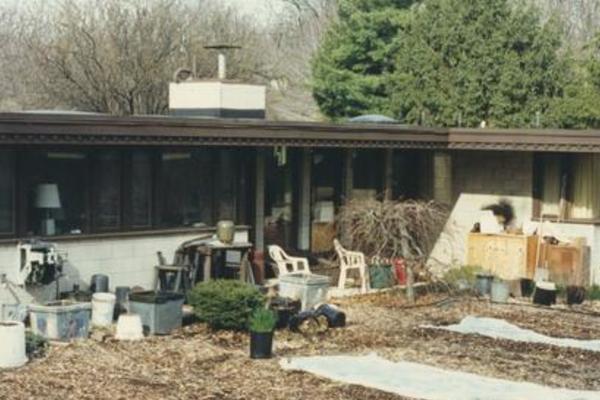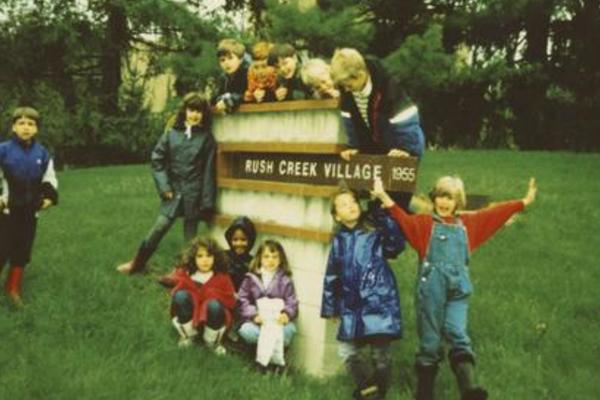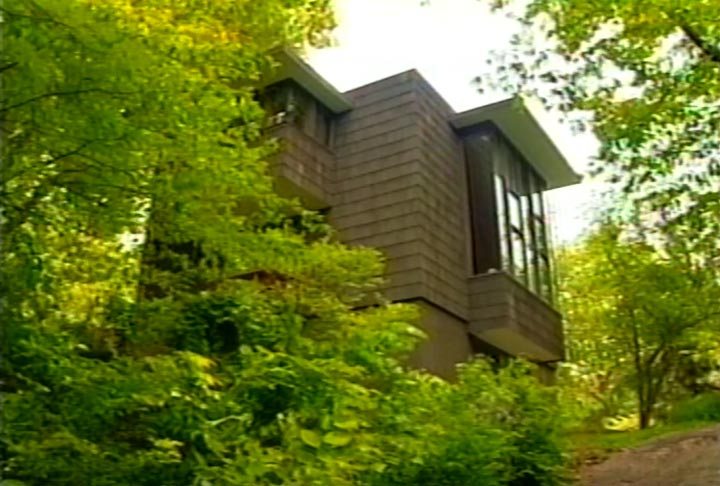Friday,
August 30, 2024
9:30am
Rush Creek Village turns 70 years old this year. Our September exhibit pays homage to this one-of-a-kind neighborhood.
In 1946, local residents Martha and Richard Wakefield visited architect Frank Lloyd Wright at Taliesin West, his winter home and architectural laboratory in Scottsdale, Arizona. Wright was the creator of Usonian architecture, developing modest homes that interacted organically with their surroundings.
Impressed by Wright's designs and philosophy, the couple returned to central Ohio hoping to realize this vision here. They recruited Columbus designer Theodore van Fossen, and together formed the Rush Creek Company in December 1954.
In 1953, the Wakefields had bought the 10-acre site that would become Rush Creek. Located along East South Street, the land encompassed a rolling meadow, wooded ravines and the Rush Run tributary. The site was platted into 30 lots for homes.
The first home built was the Wakefields' own at 210 E. South Street, constructed between 1954 and '57. As historian Jennie McCormick writes in the book Worthington Neighborhoods:
"The Wakefield home…established a standard for the community as a functional home for a family with three young children. This was typical of Van Fossen’s individualized designs for each of the original owners. Rush Creek homes respected the natural landscape and blended into it with exposed woods, concrete blocks, polished concrete or tiled flooring, and window walls that unified interior and exterior living spaces."
McCormick goes on to describe how these concepts required special ordinances from the City of Worthington to avoid sidewalks and street gutters. Newspaper articles about the neighborhood attracted widespread attention as well as prospective buyers.
Notably, at a time when many neighborhoods in Worthington had deed restrictions limiting home ownership and occupancy to whites, Rush Creek Village had no such restrictions. The WOSU "Columbus Neighborhoods" episode on the neighborhood features an interview with resident Chuck White, one of Ohio’s first Black television broadcasters. He said:
"My wife and I could not have bought a home in Colonial Hills, because of the prejudice. It was segregated. Before this place was developed, in Martha’s talking with the attorney, she said, 'There is no racism here. We don’t care what color a person is. The only prejudice that we have is architectural.'"
The neighborhood eventually attracted national attention, with articles in the "Columbus Dispatch" and "New York Times," and, in 2003, acceptance as a historic district into the National Register of Historic Places. In recent decades, newer homes have been built along with the original 30, bringing the total number of properties to 53. The neighborhood remains carefully aligned with its original vision, making it unique among neighborhoods both locally and nationally. As the Worthington Historical Society notes, "No other organically designed community of this size and architectural consistency exists."



